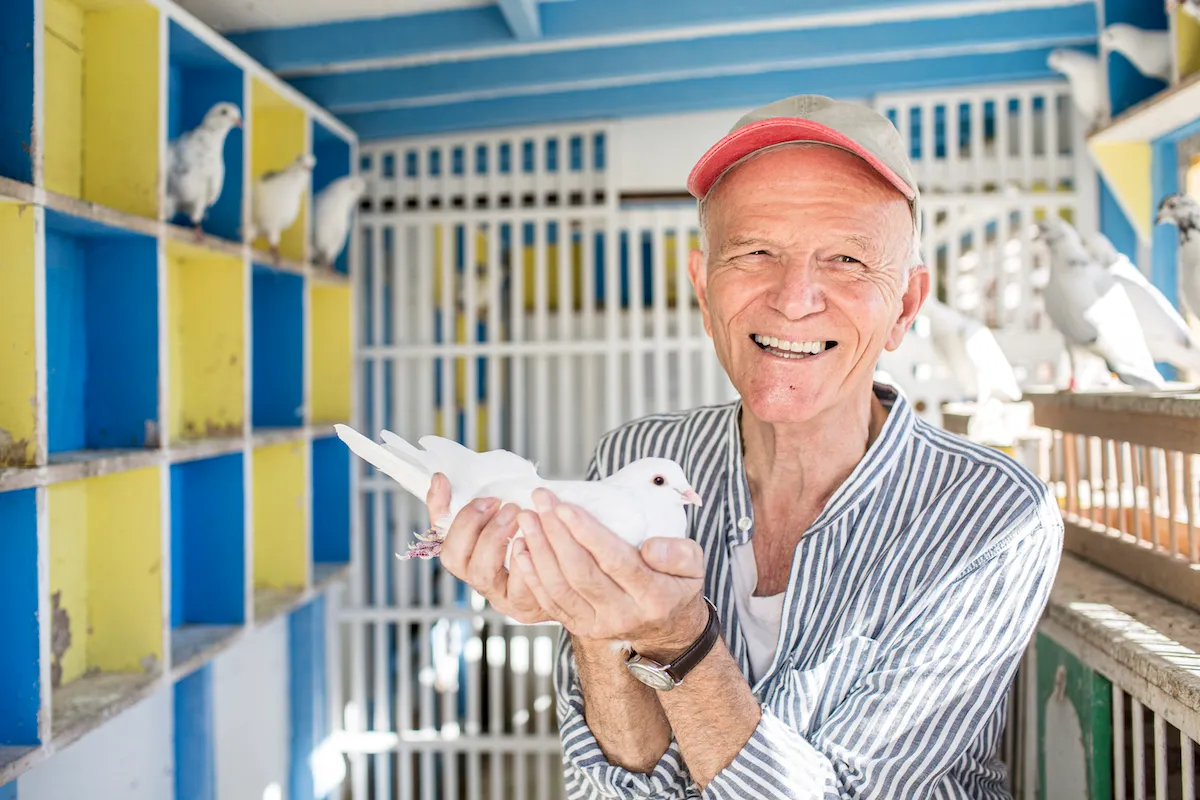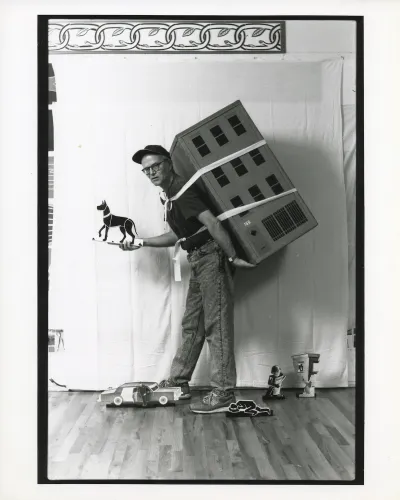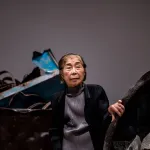
Anton van Dalen, an artist who devoted much of his career to memorializing the East Village, the New York neighborhood he called home for more than 50 years, died on Tuesday at 86. A representative for his gallery, P.P.O.W., said he died of natural causes in his sleep.
Almost all of van Dalen’s paintings were East Village scenes, some of them based in reality, others couched in fantasy. Sunlight streams past apartment buildings in some, while in others, the city has succumbed to urban warfare—a reflection of the violent forces of change that have upended the neighborhood since he first moved there in 1971.
Pigeons, in particular, have recurred throughout van Dalen’s art, where they can be seen flying over rooftops and through grey voids. He was known locally for keeping a pigeon coop on his roof.
He once told Artnet News of his avian friends, “The pigeons have been my companions since I was a child. I had a childhood that was sort of independent, so the birds became my companions, and they also became my subject of my work overtime.”
While perhaps not as widely known as other New York artists, van Dalen was prized by prominent members of the city’s art scene. KAWS collected his art; Martha Rosler once exhibited his work as part of a show of her archive.
Van Dalen was born in Amstelveen, The Netherlands, in 1938. During his childhood, his family’s property was seized by the Nazis. In 1954, he and his family left for Toronto. Then, in 1966, he moved to New York.
For a large chunk of his career—about 30 years—van Dalen served as an assistant to Saul Steinberg, an artist famous for the drawings he produced for the New Yorker. But that was not public knowledge until Steinberg died in 1999, since van Dalen kept the job a secret. He explained that decision in an interview with Hyperallergic: “There’s this thing in Dutch culture that you’re supposed to leave room for people to be who they are. In other words, for me to be crazy, I have to leave room for you to be crazy too. You make a deal with other people in order to be yourself. It’s not said like that, but it amounts to that.”
All the while, van Dalen was also working on his own practice, initially producing Surrealism-inspired drawings. He found himself at odds with the dominant mode of the moment, Minimalism, and sought instead to capture some of the weirdness he saw all around him: the “Jesus Saves” signs, the buildings in disrepair, the drug use he witnessed. He said in the Hyperallergic interview that he felt as though he were “living in a German occupied community again.”
The close-knit art scene of the neighborhood brought him into the fold of the alternative art space ABC No Rio, the collectives PAD/D and Group Material, and artists Martin Wong and David Wojnarowicz, whom he credited with breaking him out of his shell.

While van Dalen became known for paintings that struck critics for their “romantic strain,” as Michael Brenson put it, his work sometimes contained an overtly political edge. Among his most well-known works is Avenue A Cut-Out Theatre, a performance piece he first staged in 1995 in which he charted the evolution of the East Village using a model of his house. Within that model, he explored topics such as gentrification and displacement using cut-outs.
At the same time, he also continued to produce with a graphic look and a hopeful quality. For the Nevins Street subway station, van Dalen made the 1997 enamel piece Work & Nature, which includes images such as a hand punching numbers into a calculator, a mother smiling at her child, and a seamstress at work. Van Dalen meant it as an ode to “the pride, dignity, and beauty surrounding all work,” as he once said. Crowds pass it by daily on their commutes in and out of Brooklyn.
